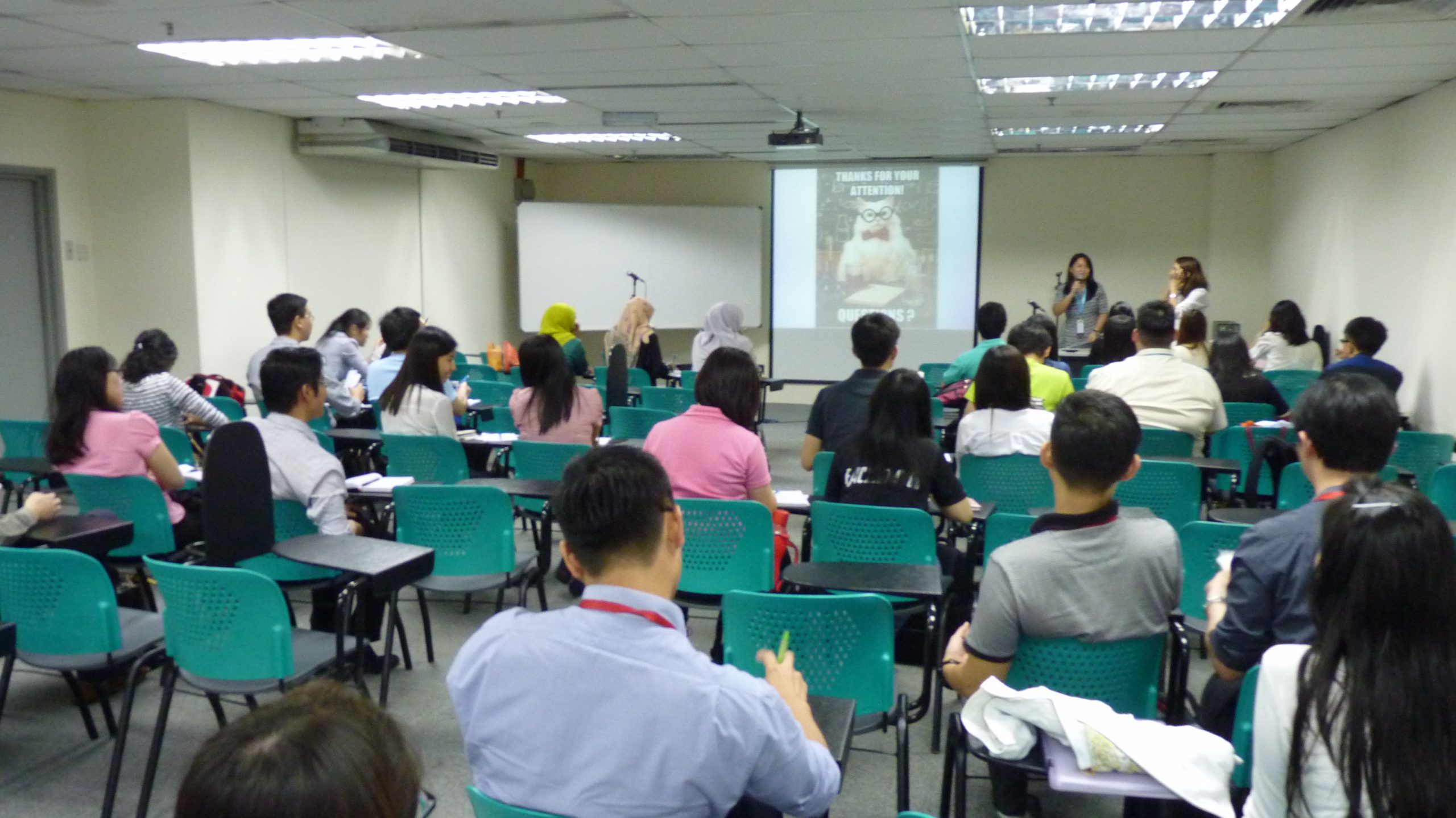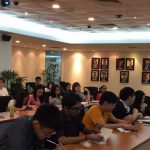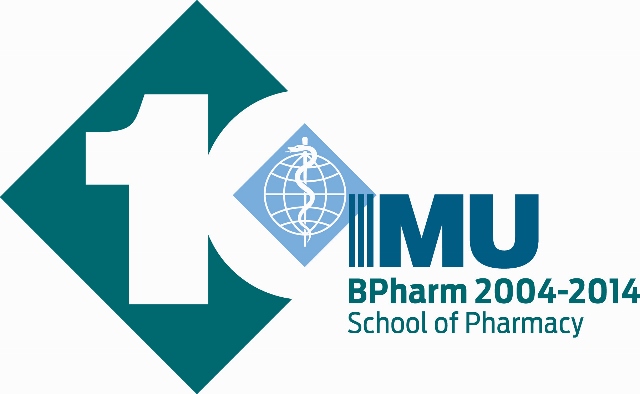 22 April 2015 – A talk jointly organised by the Malaysian Pharmaceutical Society-Young Pharmacist Chapter (MPS-YPC) and IMU Alumni entitled ‘Essential Pain Management: A Rat Approach’ was held at the International Medical University (IMU) Bukit Jalil Campus. Speaker of the talk, Munira, shared her passion in managing chronic pain to an audience of 30. Munira who is currently working in Hospital Kuala Lumpur as a Surgical Ward Pharmacist, graduated from Monash University in Australia. Since 2011, she has been involved in establishing and coordinating the Pain Medication Therapy Management Clinic alongside Chronic Pain Clinic in Hospital Kuala Lumpur.
22 April 2015 – A talk jointly organised by the Malaysian Pharmaceutical Society-Young Pharmacist Chapter (MPS-YPC) and IMU Alumni entitled ‘Essential Pain Management: A Rat Approach’ was held at the International Medical University (IMU) Bukit Jalil Campus. Speaker of the talk, Munira, shared her passion in managing chronic pain to an audience of 30. Munira who is currently working in Hospital Kuala Lumpur as a Surgical Ward Pharmacist, graduated from Monash University in Australia. Since 2011, she has been involved in establishing and coordinating the Pain Medication Therapy Management Clinic alongside Chronic Pain Clinic in Hospital Kuala Lumpur. 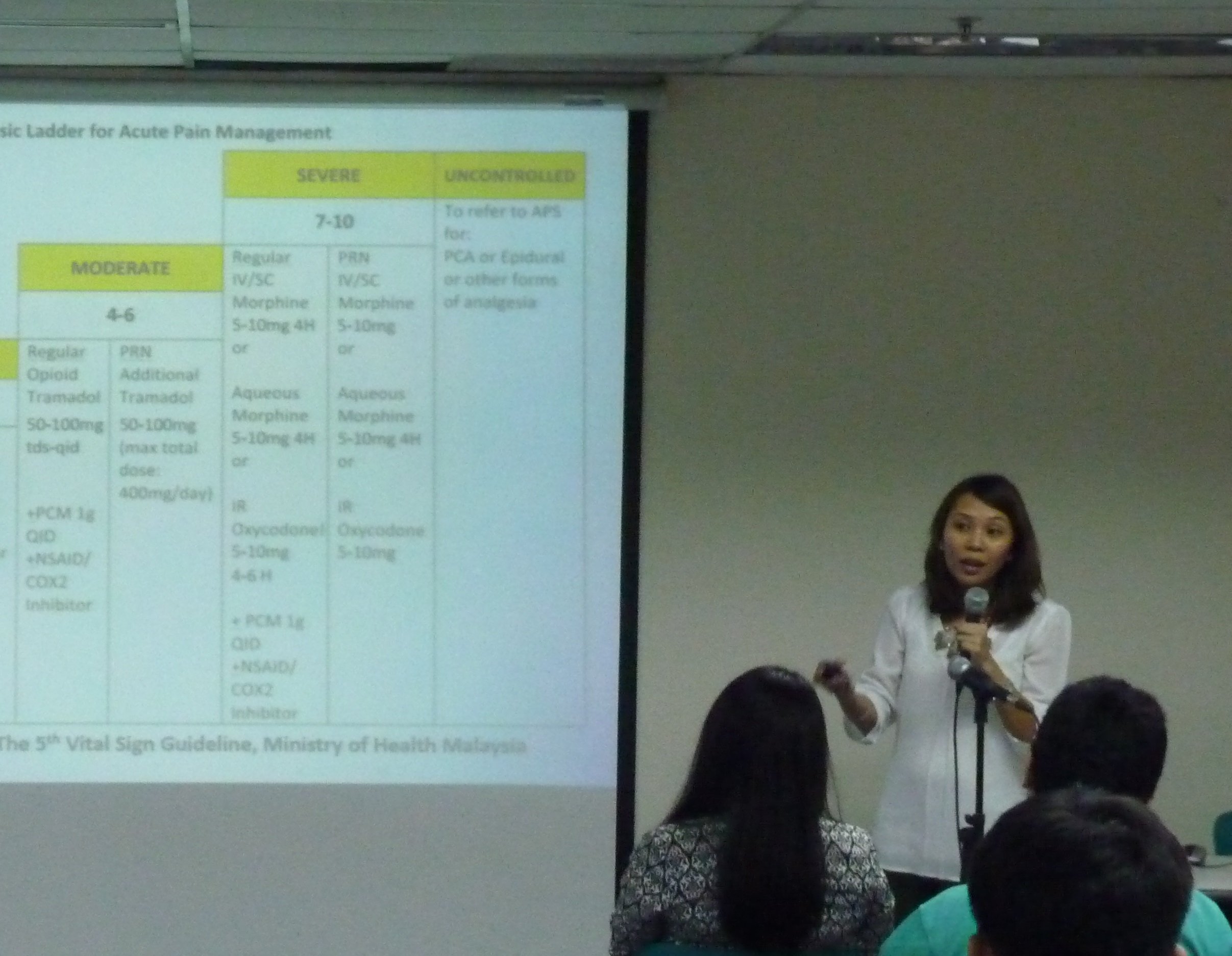 Munira started her talk by describing pain as ‘An unpleasant sensory and emotional experience associated with actual or potential tissue damage, or described in terms of such damage’. It is classified according to duration, cause, and mechanism. In term of duration, pain that lasts a long time and extends beyond the expected period of healing is called chronic, whilst pain that resolves quickly is called acute. Apart from that, the cause of the pain can be cancer or non-cancer. The mechanism of pain categorised it into neuropathic pain and nociceptive pain. Neuropathic pain is caused by damage or disease affecting any part of the nervous system involved in bodily feelings (the somatosensory system). Meanwhile, nociceptive pain is caused by stimulation of nociceptors caused by an injury to body tissues. The physiological of pain pathway starts from peripheral receptors to spinal cord leading to brainstem, thalamus, cortex and other areas. Pain assessment includes, but is not limited to, the following parameters: P- Place/Location A-Aggravating/alleviating factors I-Intensity N-nature and neutralizing factors
Munira started her talk by describing pain as ‘An unpleasant sensory and emotional experience associated with actual or potential tissue damage, or described in terms of such damage’. It is classified according to duration, cause, and mechanism. In term of duration, pain that lasts a long time and extends beyond the expected period of healing is called chronic, whilst pain that resolves quickly is called acute. Apart from that, the cause of the pain can be cancer or non-cancer. The mechanism of pain categorised it into neuropathic pain and nociceptive pain. Neuropathic pain is caused by damage or disease affecting any part of the nervous system involved in bodily feelings (the somatosensory system). Meanwhile, nociceptive pain is caused by stimulation of nociceptors caused by an injury to body tissues. The physiological of pain pathway starts from peripheral receptors to spinal cord leading to brainstem, thalamus, cortex and other areas. Pain assessment includes, but is not limited to, the following parameters: P- Place/Location A-Aggravating/alleviating factors I-Intensity N-nature and neutralizing factors
She also spoke about the Rat Approach for pain management with R standing for recognise, A for access and T for treat. Firstly, we need to know if the patient has pain. Other health workers or even family members may help identify if the patient is having pain too. Secondly, we must measure the severity of the pain by using a pain score and how is the pain affecting the patient. A diagnosis of pain could also be done at this point. Next, we should treat the pain by non-drug and drug treatments. Non-drug treatment includes RICE, nursing care and also psychologically approaching the patient.
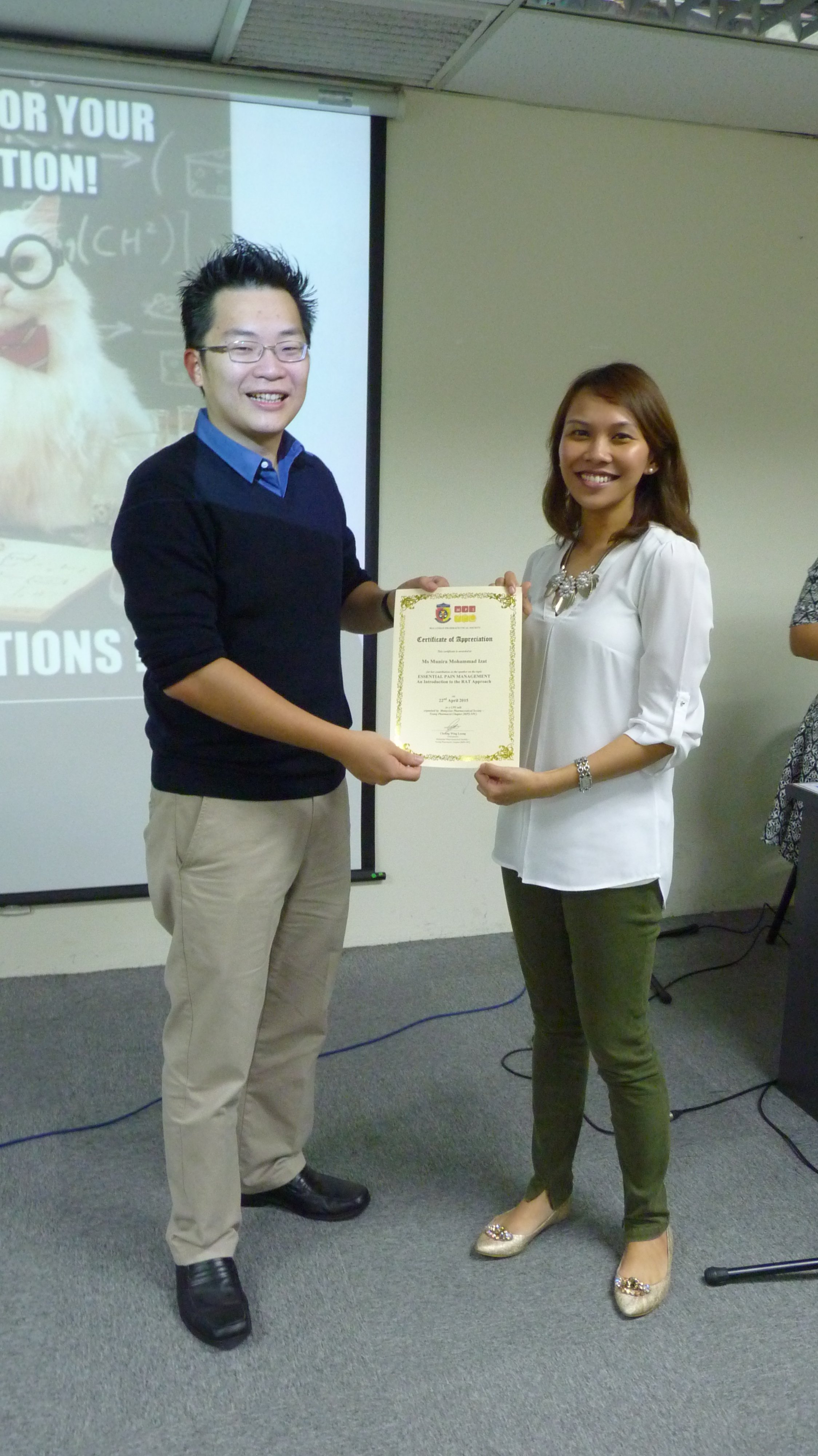 There are many ways to which pain can be rated such as by MOH scale, Wong Baker Face scale and Flacc scale. MOH scale is used to rate pain on a scale of 1-10 with 1 being the least painful and 10 being the most painful. However, Wong Baker Face scale is used for kids to communicate how much pain they are feeling. Next, the Flacc scale is used for cases involving infants. Before the talk ended, there was Question and Answer session in which some participants took the opportunity to clear their doubts. The feedback session right after that revealed a majority of participants joined more than one talk held by MPS as they found it enlightening. With the presentation of certificates as a token of appreciation to the speaker, the talk ended at 9:00pm. An announcement of pharmacy conference was made before everyone left. This article is written by International Medical University Student Ambassadors, Karmelia Chan and Chong Kae Ru.
There are many ways to which pain can be rated such as by MOH scale, Wong Baker Face scale and Flacc scale. MOH scale is used to rate pain on a scale of 1-10 with 1 being the least painful and 10 being the most painful. However, Wong Baker Face scale is used for kids to communicate how much pain they are feeling. Next, the Flacc scale is used for cases involving infants. Before the talk ended, there was Question and Answer session in which some participants took the opportunity to clear their doubts. The feedback session right after that revealed a majority of participants joined more than one talk held by MPS as they found it enlightening. With the presentation of certificates as a token of appreciation to the speaker, the talk ended at 9:00pm. An announcement of pharmacy conference was made before everyone left. This article is written by International Medical University Student Ambassadors, Karmelia Chan and Chong Kae Ru.




